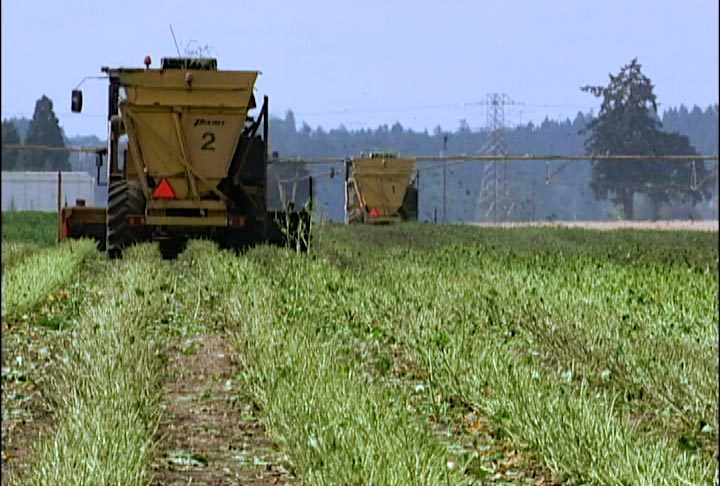Follow along as we travel from the field to the factory to learn how some of the best and freshest green beans get picked, processed, and canned all within a few short hours of time.
For those of you who have been following, I like to see how things are made, how they work. Take me to a factory and it’s like putting a kid in a candy store. I eat it up. So when I learned that one of the first processing plants to become Food Alliance certified was in my backyard, I thought this is one I’d like to see. And to learn how sustainable practices were crossing over from grower to processor. It sounded like a logical progression.

We started where the green beans are grown, out in a bean field. A very large bean field. They had 4 pickers going at once. And I don’t mean 4 people bending, sifting, and picking. These pickers were closer to the size of a Hummer on steroids. Who invented these things? They attacked 4 rows at time, bristly brushes lowered into the bean bushes (yes, I’m having fun). And out popped scratch-free green beans. Beautiful beans. Then they got dumped into a waiting hauler, which dumped them into a waiting bin at Truitt Brothers.
And then the fun began. Conveyor belts galore. It was dizzying. From one to another, to another, to another, almost into infinity. I think you will get a sense of it from the film. I’m not sure why they had to travel such a distance in such a way, but I’m sure each step had its purpose. Those beans were washed, jiggled, and tumbled so many times, I can’t imagine any leaf, rock, or piece of dirt that made it to the can. Only beans, just a few hours old. As Sue Root said, you can’t get much fresher than that.
Related Print Story: Truitt Brothers: Preserving the Bounty in the Modern Age
Recipes from the show: Old Fashioned Green Beans and Bacon; Green Beans A La Poulet
—Rebecca
Most of the videos featured on Cooking Up a Story were produced, filmed, and edited by Rebecca Gerendasy. Fred Gerendasy contributed as a writer to many of the posts and occasionally as the interviewer. Visit Rebecca Gerendasy Clay – Art and Fred Gerendasy Photography to see their current work.
